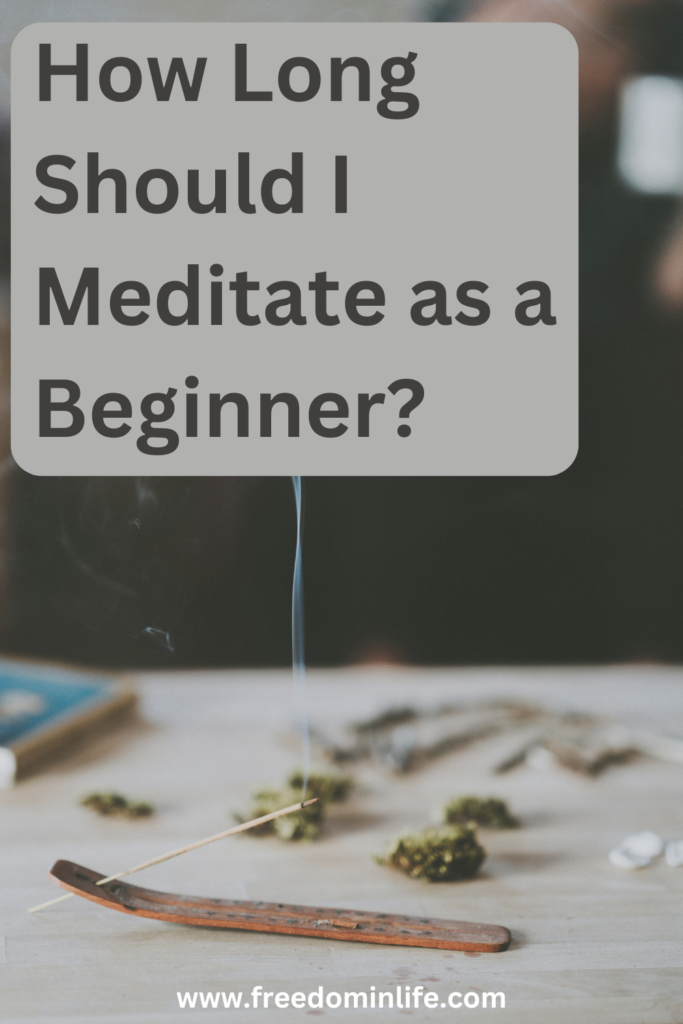
Meditation is a powerful tool for calming the mind, promoting relaxation, and serving as a mental reset. With the recent boom in the wellness industry, it’s gained significant attention.
But starting a meditation practice can feel daunting. In today’s fast-paced world, unfortunately sitting still and quieting the mind doesn’t come naturally to us and making it a consistent habit can be even harder. How long should you meditate? What should you listen to? When should you do it? Well hopefully I can give you clear answers in this article.
Meditation doesn’t have to be complicated. Just start small and keeping it simple, like 5 minutes a day taking deep slow breaths. Anyone can integrate this effective practice into their daily life. That’s what makes it so powerful – the accessibility of it.
As someone who loves pushing mental and physical limits through freediving, ice diving, and cold-water immersion, I’ve found meditation to be really valuable and effective for me. I like to pair it with breathwork, and often use it either before or after a cold-water plunge or swim. Combining breath and mindfulness not only helps you feel grounded but it can also empower you to face challenges with confidence.
It can be confusing to know how and when to start as a beginner meditating. There is a whole lot of information out there. I’ve made this article to try to give you an insight into daily meditation as a beginner and how long should you meditate for starting out.
I will break it down as follows:
- Types of meditation
- Good times to meditate
- How to incorporate meditation into your day
- Meditation tips for beginners: how long and progression
- Resources
- Meditation and Breathwork

Types of Meditation
There are different techniques you can implement for meditation.
Visualization
If you enjoy using your imagination, visualization can be a great option. Create a mental story or scene to focus on or follow along with a guided visualization to help direct your mind.
Mantra mediation
This is when you focus on a word or sentence and repeat it over and over again in your head. This can be used to help you focus on an intention or if you would rather work with words over images. By saying the mantra repeatedly, you can focus on the letters, the sound of the words, the rhythm of the mantra, or the meaning of it.
Mindfulness meditation
This is another effective technique where you bring your focus externally instead of internally. Listen to the sounds around you, the things you can feel, the way your body is resting, and just observe.
Breath Awareness
Focusing on your breath is a simple yet powerful way to calm your mind. The breath is a constant, life-sustaining force within us, always available as a point of focus. Take deep, slow breaths and notice the sensation of air entering and leaving your body.
Try techniques like box breathing, where you inhale, hold, exhale, and hold again in equal intervals.
Beginner-friendly meditation options include guided meditations and simple breath awareness. Guided meditations allow you to relax fully as a calming voice leads you through the process of focusing your mind. Alternatively, spending just five minutes concentrating on your breath is an excellent way to establish a solid foundation for your meditation journey.

Good Times to Meditate
The best time to meditate depends entirely on your personal routine and preferences. For morning people, meditating before starting work or leaving the house can be an ideal way to begin the day.
It offers a quiet moment to center yourself before the busyness of life takes over. Use this time to set intentions for the day, creating mental clarity and focus before the pressures and distractions of daily life set in.
Alternatively, the last thing at night before bed or when you are winding down is another opportunity to meditate. This can be a lovely way to end the day, leaving your mind clear and relaxed before sleep. Personally, I often put on a sleep meditation in bed—and 100% of the time, I fall asleep to it. Not a bad thing at all!
If mornings or evenings don’t work for you, here are some other ideas:
- While making coffee, take a few minutes to focus on your breath or the sound of the coffee brewing.
- On your lunch break, go outside for a walk and practice box breathing in a local park or quiet area.
- After finishing work for the day, take five minutes before heading home—even in your car—to do a guided meditation or a body scan with your eyes closed.
You can always find five minutes in your day. It’s more important to make meditation a habit and stick with it than to worry about the perfect time. Find what works best for you.

How to Incorporate Meditation Into Your Day
For beginners, meditating every day can feel daunting. But by weaving it into your routine, it can become second nature—something you don’t even think about.
Some ideas could be in the shower, during your lunch break, or in the car on your way home. You could even decide that every evening after brushing your teeth, you’ll take 20 deep breaths, focusing on fully filling your lungs and then effortlessly exhaling.
Be creative with how you integrate mindful moments into your day—it can be a fun little experiment! Just make sure not to overcomplicate it. Don’t start with 30 minutes if it feels like an uphill battle.
Keep it easy and enjoyable so you’ll stay consistent and build a strong foundation. If that means starting with only two minutes, then go for it!
Meditation Tips for Beginners: How Long to Meditate and How to Progress
Once you’ve figured out when to meditate, the key is to stick with it daily so you can build consistency. Starting with five minutes a day is a great baseline for beginners. Once you feel comfortable, you can gradually increase the time.
If you have a busy schedule or find it hard to stay on track, try setting alarms or reminders. Create a cozy meditation space with a candle or calming music to set the tone. There are no rules—you get to create a practice that works for you. Some people like to journal afterward or make a gratitude list beforehand.
Whatever tools you use, the goal is to stay consistent. That’s how you’ll start noticing the benefits of meditation.

Meditation Apps and Resources for Beginners
Some apps I’ve used and recommend include Headspace, Calm, and Insight Timer. These offer guided meditations, timers, and even relaxing music to meditate to. You can also explore Sam Harris’s app, Waking Up, which has guided meditations, expert conversations, and lessons for all levels.
Another favorite of mine is Boho Beautiful Meditation. They offer guided programs and short practices perfect for beginners. Plus, they have an incredible yoga channel on YouTube that complements their meditations.
Meditation and Breathwork
Combining breathwork with meditation can create a focused and stable mind, helping you tackle everyday challenges. These practices are especially effective for relieving stress and anxiety. For beginners, breathwork adds a physical element to meditation, making it easier to focus.
To wrap things up, I’d encourage you to start small and aim for consistency. This is something I’m still working on myself—life gets busy, and routines shift—but that’s all part of the journey.
Try different methods and see what works for you or follow a 30-day program from someone online. If you have any tips I missed, let me know in the comments below! I’d love to hear your experiences and how long it took you to feel the benefits of meditation as a beginner.
Enjoy the journey of inner exploration and giving your mind a much-needed break.


FoU uGy ysnLUpv epboZ zlKMIZA sIqQXrM
18id27